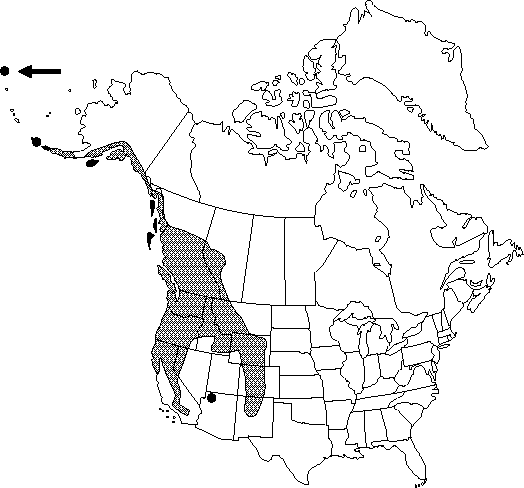Difference between revisions of "Ranunculus uncinatus"
in G. Don, Gen. Hist. 1: 35. 1831.
FNA>Volume Importer |
imported>Volume Importer |
||
| (5 intermediate revisions by 2 users not shown) | |||
| Line 1: | Line 1: | ||
{{Treatment/ID | {{Treatment/ID | ||
|accepted_name=Ranunculus uncinatus | |accepted_name=Ranunculus uncinatus | ||
| − | |accepted_authority=D | + | |accepted_authority=D. Don |
|publications={{Treatment/Publication | |publications={{Treatment/Publication | ||
|title=in G. Don, Gen. Hist. | |title=in G. Don, Gen. Hist. | ||
| Line 15: | Line 15: | ||
|name=Ranunculus bongardii | |name=Ranunculus bongardii | ||
|authority=Greene | |authority=Greene | ||
| + | |rank=species | ||
}} {{Treatment/ID/Synonym | }} {{Treatment/ID/Synonym | ||
|name=Ranunculus bongardii var. tenellus | |name=Ranunculus bongardii var. tenellus | ||
|authority=(A. Gray) Greene | |authority=(A. Gray) Greene | ||
| + | |rank=variety | ||
}} {{Treatment/ID/Synonym | }} {{Treatment/ID/Synonym | ||
|name=Ranunculus uncinatus var. earlei | |name=Ranunculus uncinatus var. earlei | ||
|authority=(Greene) L. D. Benson | |authority=(Greene) L. D. Benson | ||
| + | |rank=variety | ||
}} {{Treatment/ID/Synonym | }} {{Treatment/ID/Synonym | ||
|name=Ranunculus uncinatus var. parviflorus | |name=Ranunculus uncinatus var. parviflorus | ||
|authority=(Torrey) L. D. Benson | |authority=(Torrey) L. D. Benson | ||
| + | |rank=variety | ||
}} | }} | ||
|hierarchy=Ranunculaceae;Ranunculus;Ranunculus subg. Ranunculus;Ranunculus sect. Ranunculus;Ranunculus uncinatus | |hierarchy=Ranunculaceae;Ranunculus;Ranunculus subg. Ranunculus;Ranunculus sect. Ranunculus;Ranunculus uncinatus | ||
| Line 49: | Line 53: | ||
-->{{#Taxon: | -->{{#Taxon: | ||
name=Ranunculus uncinatus | name=Ranunculus uncinatus | ||
| − | + | |authority=D. Don | |
| − | |authority=D | ||
|rank=species | |rank=species | ||
|parent rank=section | |parent rank=section | ||
| Line 64: | Line 67: | ||
|publication year=1831 | |publication year=1831 | ||
|special status=Endemic | |special status=Endemic | ||
| − | |source xml=https:// | + | |source xml=https://bitbucket.org/aafc-mbb/fna-data-curation/src/2e0870ddd59836b60bcf96646a41e87ea5a5943a/coarse_grained_fna_xml/V3/V3_587.xml |
|genus=Ranunculus | |genus=Ranunculus | ||
|subgenus=Ranunculus subg. Ranunculus | |subgenus=Ranunculus subg. Ranunculus | ||
Latest revision as of 21:49, 5 November 2020
Stems erect, never rooting nodally, hispid or glabrous, base not bulbous. Roots never tuberous. Basal leaf blades cordate to reniform in outline, 3-parted or sometimes 3-foliolate, 1.8-5.6 × 2.8-8.3 cm, segments again lobed, ultimate segments elliptic to lanceolate, margins toothed or crenate-toothed, apex acute to rounded-obtuse. Flowers: receptacle glabrous; sepals reflexed or sometimes spreading, 2-3.5 × 1-2 mm, pubescent; petals 5, yellow, 2-4(-6) × 1-2(-3) mm. Heads of achenes globose or hemispheric, 4-7 × 4-7 mm; achenes 2-2.8 × 1.6-2 mm, glabrous or sparsely hispid, margin forming narrow rib 0.1-0.2 mm wide; beak persistent, lanceolate, curved, hooked, 1.2-2.5 mm. 2n = 28.
Phenology: Flowering spring–summer (Apr–Aug).
Habitat: Moist meadows or woods, often along streams
Elevation: 0-3400 m
Distribution

Alta., B.C., Alaska, Ariz., Calif., Colo., Idaho, Mont., Nev., N.Mex., Oreg., Wash., Wyo.
Discussion
Plants with hispid stems and achenes are often separated as Ranunculus uncinatus var. parviflorus; these two characters are poorly correlated, however, and sometimes vary between plants in a single collection. Ranunculus uncinatus was reported from northeastern Alberta and adjacent Northwest Territories by H. J. Scoggan (1978-1979, part 3). The specimens have hairy receptacles and straight, broad achene beaks; they apparently represent small individuals of R. macounii.
Some Native Americans used Ranunculus uncinatus as an antrirheumatic, a diaphoretic, a disinfectant, and an orthopedic aid, as well as in herbal steam baths intended to soothe sore muscles and rheumatism (D. E. Moerman 1986).
Selected References
None.